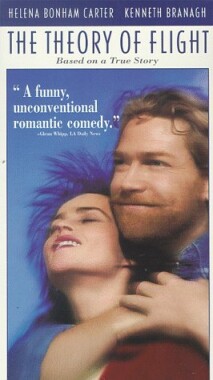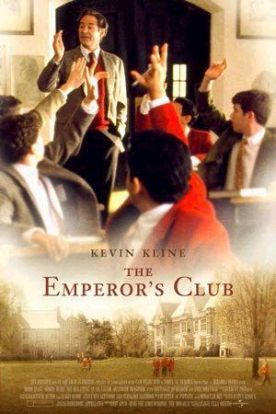Theory of Flight, The
In The Theory of Flight, Helena Bonham Carter may have contracted
Amyotrophic Lateral Sclerosis, better known to Americans as Lou Gehrig’s
disease, but her real-life beau, Kenneth Branagh, seems to have contracted an
even worse case of Robin Williams’s disease. Both KB and RW are young men who
labor under the burden of more blessings of talent and brains than they know
what to do with and both appear to have concluded that they are going to repay
nature’s bounty by refusing to give themselves airs — indeed by spending
their lives demonstrating what nice guys they are. This they prefer to do
by making movies full of cheap uplift, in which they portray sensitive, ’90s men
driven to charming but affecting eccentricity by some secret (or not-so-secret)
sorrow. They end up bringing blessings to all around them not by anything they
are actually do so much as simply by being such nice guys — and
therefore a Healing Presence to those around them. And, indeed, themselves.
The latest exercise in this kind, directed by Paul Greengrass from a
screenplay by Richard Hawkins — for whom the story appears to be in some
degree or another autobiographical — stars Branagh as Richard Hopkins, a
failed artist who suddenly becomes obsessed with the idea of flight, or the
theory of flight, and building primitive aeroplanes. Because he causes a public
nuisance with his first attempts to fly, in London, he is given 120 hours of
community service, in the course of which he is somewhat improbably asked to
look after a young woman called Jane Hatchard (Miss Bonham Carter) who is in a
fairly advanced stage of her appalling disease and soon, alas, to die.
It’s Odd Couple time again. Richard is always off on a cloud somewhere, and
Jane is always in a foul temper, mainly because she missed her chance to be
seduced by a teen boyfriend on her 17th birthday and is, now that she is in her
twenties, thoroughly cheesed off that she is still a virgin. You can pretty much
guess the rest, though the picture is irritatingly coy both about getting us
from heart-tugging A to inevitable B and about the reasons for the delay.
Branagh seems content, like so many other actors and directors and producers and
writers these days, only to strike attitudes and not to bother himself about the
hard work of explaining why things are happening. We are never given the
slightest idea why he gave up painting, or left his pretty girlfriend Julia
(Holly Aird) who still cares about him, or why he should be insisting he is
incapable of the sexual demands that Jane is making when he obviously isn’t.
Above all, we have no clue why he should be mooning around pretending he’s a
Wright brother in the mid-1990s. Perhaps it was for no more reason than that it
makes him romantic and interesting to the chicks — which he claims is the
reason he took up painting as a teenager. “Sometimes reasons are hard to come
by,” he says, which is true enough though rather a cop-out in the circumstances.
Sometimes, too, they’re not, and we really do need at least one or two to be
getting on with. Otherwise, we are likely to think his claim to Jane that he
cannot love her not because she is “a cripple” but because he is is just
another bit of the posing and attitudinizing that this fine actor has
regrettably decided to devote his life to.
Discover more from James Bowman
Subscribe to get the latest posts to your email.






